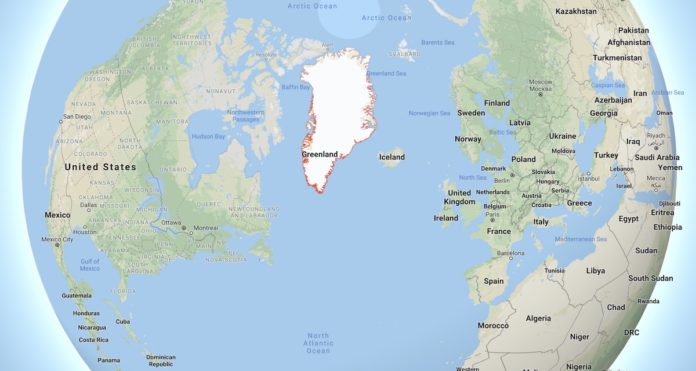Talib Jabbar Hassan, Ph.D. student, College of Political Science, University of Baghdad.
Zainab Ghatah Nahedh, MA in Political Science, University of Baghdad.
Greenland is the second-largest island in the world after Australia. It is an independent Danish region within the Kingdom of Denmark. Geographically, it is located in the Arctic, specifically on the northern side of the Atlantic Ocean. Politically it is linked to the European continent, especially to Norway, Iceland, and Denmark.
The capital of Greenland is Nuuk, the largest city on the island with the lowest population, about 56,000 inhabitants.
Given the importance of the island, the US President Donald Trump recently expressed his willingness and desire to buy it. This offer caused a sensation around the world. Denmark strongly rejected it, and many Danish politicians stated that the island is not for sale. Morten Ostrgord, the leader of the parliamentary group of the Danish Social Liberal Party, said Trump has “a crude mentality, and he is a trader who thinks that everything is for sale”. As a result of these statements, Trump canceled his planned visit to Denmark, which was scheduled to take place between the second and third of September. This has worsened the relationship between the US and Denmark.
It is noteworthy that the idea of buying the island of Greenland by the US is not new. The idea came first to light in the sixties of the nineteenth century during the reign of Andrew Johnson, and a State Department report – dated to 1867 – pointed to the strategic importance of the island. However, no official move was taken to buy the island until 1946, when Harry Truman offered Denmark 100 million dollars for the island, as well as an earlier offer to swap land in Alaska for strategic areas in Greenland.
But the most important question remains: why does Trump insist on owning the island at this time?
It is no secret that in the past few years there has been strong competition between Russia, the United States, and many European countries over the Arctic since the melting of the Arctic ice has revealed tremendous riches in the bottom of the ocean and can be accessed with the continued melting of the ice. The region is the scene of global competition and the potential for major power struggles over natural resources and traffic. Russia is likely to have the largest share of energy resources in the Arctic after it has discovered at least 43 oil and gas fields in the North Pole until the end of 2013, compared to 11 fields by America. Also, Russia has the largest fleet of icebreakers in the world consisting of 40 ones. Russia is seeking to create new icebreakers operating on nuclear power. According to Russian Deputy Prime Minister Dmitry Rogozin, Russia is preparing three nuclear icebreakers to operate in 2020.
Russia also has plans to build warships operating in this icy atmosphere that can carry winged missiles, while America in the region has only one old and heavy icebreaker, 42 years old, which is not in good condition. It is now seeking to develop a new icebreaker soon. The former US national security adviser John Bolton said about the new icebreakers, “the US hegemony should be restored in the Arctic to diminish the sovereignty of Russia and China in the region.”
This shows that the US position in the North Pole is weak. “We have been troubled for a long time because the country does not have sufficient resources to support our presence in the Arctic,” said Coast Guard Commander Admiral Paul Zakneft.
The United States had to look for a solution to rebalance its power in the region. The idea was to buy Greenland. This is an island where the ice is highly melting. According to the recent Arctic climate change assessment, local warming in Greenland is three times more than the average global warming. In 2010 Greenland granted the first licenses for oil companies to explore for oil and gas, and it opened their Arctic coasts for oil production and extraction. The idea of buying the island is certainly an attempt to strengthen America’s presence in the region before Russia does and to weaken the role of China, especially after the trade and economic war with the United States. China has invested in mining in Greenland despite the US refusal. The Americans believe that the Russian-Chinese expansion is the Arctic imposes direct danger.
If the United States succeeds in buying the island, it will be a response to the Russians and to show their military capabilities in the north. This will help in overcoming China, the most prominent economic rival now. Therefore, America’s possession of this island will mean a comprehensive change in power balance and the rules of the game. It will go beyond what was in the Cold War to focus on influence and interests in which expansion and military dominance were intertwined with commercialism and the search for natural resources.
Sources:
1-ايرل ن- ميتلمان، موجز جغرافية أمريكا، مكتبة الإسكندرية، مصر، ٢٠٠٠.
2-أسماء بن مشيرح، القطب الشمالي في الاستراتيجية الروسية: فضاء جديد لمواجهة الأطلسية، مجلة قضايا آسيوية، العدد الأول، المركز الديمقراطي العربي، ألمانيا، ٢٠١٩.
3-اوغستين كوليت، دراسات حالات عن تغيير المناخ والتراث العالمي، منشورات مركز اليونسيكو، منظمة الأمم المتحدة، 2013، ص: ٢٣.
4-ناجي بوزيان، استراتيجية الدفاع عن القطب الشمالي، مجلة الدفاع الوطني اللبناني، العدد (98)، 2016، على الموقع الإلكترونيhttps://www.lebarmy.gov.ib..
5-ناصر السهلي، غرينلاند تعيد تهافت القوى العظمى على المنطقة القطبية الشمالية، على الموقع الإلكتروني:https://www.alaraby.co.uk في 21 آب 2019.
6-شراء غرينلاند: ترامب ينتقد رد الدنمارك البغيض بعد إلغاء زيارته، على الموقع الإلكتروني: www.bbc.com في 21 آب ٢٠١٩.










